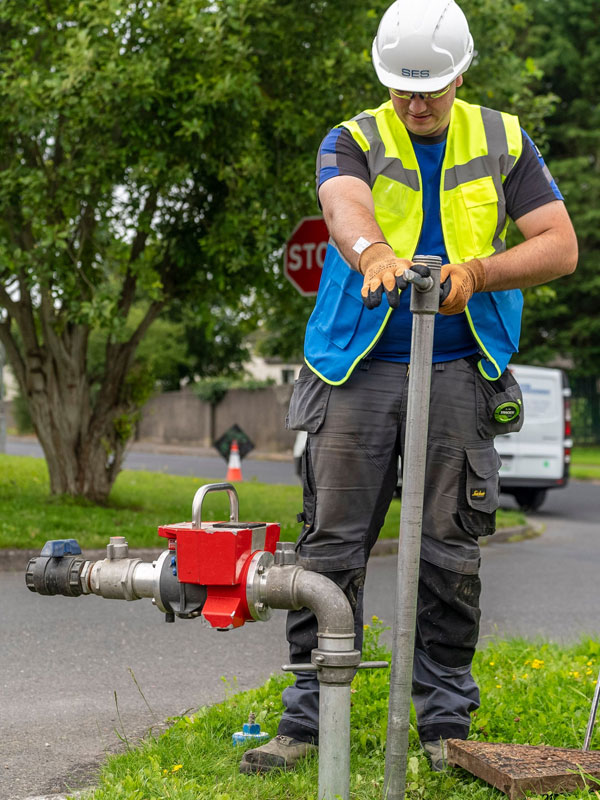SES Water
Flow Simulation Testing
What Do We Do?
Hydrant flow and pressure tests can be conducted to determine the availability of water for planning (demand analysis) and firefighting purposes (available flow and pressure) for developments. The tests are also useful in determining the general condition of the water distribution system by detecting any pipe constrictions, closed valves or poor water quality issues within the network.
The capacity of an existing network must be first verified to determine if the design demand from a future water connection can be made without reducing the overall performance of the water supply system. The aim of a Flow Simulation Testing is to confirm that service along the network is not disrupted by the new connection.
Pressure loggers are installed at points along the network to understand the service capacity before a flow simulation test is conducted at times of peak demand or minimum static pressure.

Flow Simulation Testing Applications
Local Authorities, Consulting Engineers, Architects, Developers
- Planning Applications: As part of any planning application for a development, Flow Simulation Testing is performed to demonstrate available flow and pressure in the existing pipe network for future water connections.
- Hydraulic Modelling: In conjunction with pressure logging, fire hydrant testing is carried out to determine the available flow in a pipe network which can be used to design, calibrate and verify hydraulic models of water networks.
SES provide Flow Simulation Testing to customers who are involved in the planning and design of new developments or upgrades to existing developments. Depending on your design requirements. we can carry out single or multiple hydrant tests that suits your needs.
Our hydrant testing procedure is carried out in accordance with British standards BS9990. Using the latest flowmeter technology and methods, we can establish the maximum sustainable flow rate of a hydrant and record static and residual pressures in the process.

Find out more about what SES Water can do for you
